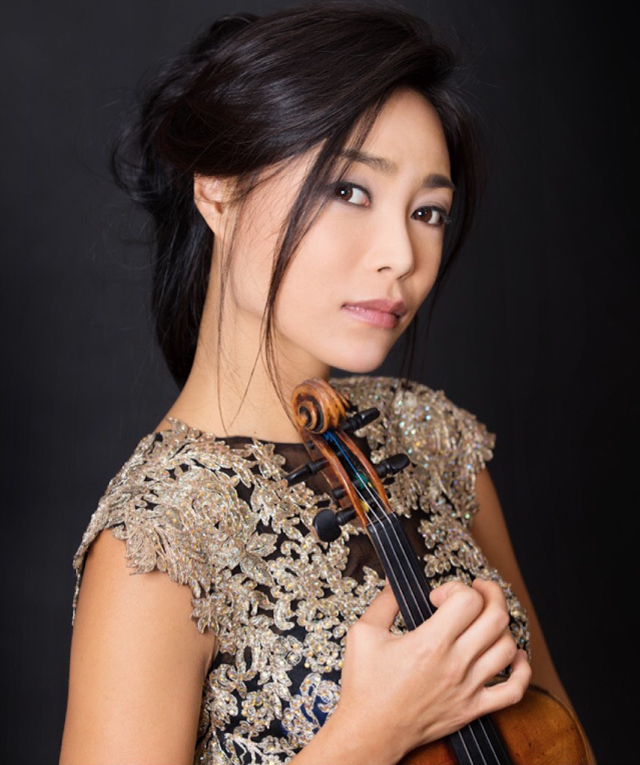Asia Orchestra Week 2023
The Sponsored Performance at the Reiwa 5 (78th) National Arts Festival, Agency for Cultural Affairs
Asia Orchestra Week 2023
Symphony Together with You♪
Thank you for your visiting the National Arts Festival, Agency for Cultural Affairs “Asia Orchestra Week 2023”.
Since its first season in 1946, the Arts Festival has offered every citizen opportunities to
experience the finest pieces of work and promote and advance artistic creativity.
For a series of orchestral concerts, ‘Asia Orchestra Week’ since 2002, we invite professional orchestras of the Asia-Pacific region.
Please enjoy the rich sounds of each orchestra to your heart’s content.
Performance
-
Chiba Symphony Orchestra
Yamashita Kazufumi, ConductorBorodin: In the Steppes of Central Asia Dan Ikuma: Orchestra Suite "The Silk Road" Mussorgsky (arr. Ravel): Pictures at an ExhibitionThursday, October 5, 2023 Live recording Venue: Tokyo Opera City Concert Hall -
Istanbul State Symphony Orchestra
Gürer Aykal, Conductor Cihat Askin, ViolinAkutagawa Yasushi: Triptyque for string orchestra Ulvi Cemal Erkin: Violin concerto Tchaikovsky: Symphony No.4 in F minor, op.36Friday, October 6, 2023 Live recording Venue: Tokyo Opera City Concert Hall -
Korean Chamber Orchestra
Min Kim, Violin, Music Director Soyoung Yoon, ViolinSchubert: Overture in C minor, D. 8 Piazzolla: The Four Seasons of Buenos Aires Isang Yun: Tapis pour cordes Dvorak: Serenade for Strings in E major, op.22Saturday, October 7, 2023 Live recording Venue: Tokyo Opera City Concert Hall
Program Notes
Borodin:In the Steppes of Central Asia
Chiba Symphony Orchestra, Yamashita Kazufumi, Conductor
Thursday, October 5, 2023 Live recording Venue: Tokyo Opera City Concert Hall
Today's program invites us to a musical journey along the Silk Road, the long, long ancient route network which had developed since BCE. Given the name as silk textiles were transported on it, this trade network connecting the East and West consisted of several routes, such as the one which went through steppes to the north of the Tian Shan Mountains to the Mediterranean including Rome. There was also a route traveling the southern part of Russia, several oasis cities and Dunhuang, China.
Goods exported from the distant West through the Silk Road had reached even Japan. The cultural exchanges promoted by this trade network have had a great influence throughout Asia.
Our concert opens with “In the Steppes of Central Asia” (1880) by the Russian composer Alexander Borodin (1833-1887). It was written for an event celebrating the 25th anniversary of the reign of Alexander II, emperor of Russia.
At the beginning of the work, a soft high-pitch note on violins (with the flageolet technique of producing distinctive clear tone) seems to afford an extensive view of the immense steppes, beneath which a simple melody like a Russian folk song is introduced. Then we hear a monotone rhythm evoking the steps of horses and camels approaching, and a new melody with an Oriental scent. The latter is the theme of a caravan that is crossing the desert. The grandly sounding Russian song eventually blends into the beautiful tune of the caravan, and they fade away in the distance.
Dan Ikuma:Orchestra Suite "The Silk Road"
Chiba Symphony Orchestra, Yamashita Kazufumi, Conductor
Thursday, October 5, 2023 Live recording Venue: Tokyo Opera City Concert Hall
The above-mentioned composer Borodin was one of the members of the group called “The Mighty Five”: he, together with C. Cui, M. Balakirev, M. Mussorgsky and N. Rimsky-Korsakov, exercised his individuality to establish the Russian national school of classical music.
While Borodin had no chance to visit Central Asia, the Japanese composer Dan Ikuma (1924-2001) was interested in various Asian places including the Chinese continent both deeply and widely, and traveled there many times. Dan was already active in his youth, founding the group “San-nin-no-kai” (The Three) along with his colleagues Akutagawa Yasushi and Mayuzumi Toshiro. Dan later breathed fresh life into the post-WWII Japanese composing world. His wonderful catalogue includes several operatic masterpieces like “Yūzuru” (Twilight Crane) which is staged throughout the world, great symphonic efforts such as Symphony No. 6 “HIROSHIMA”, the much-loved choral work “The Chikugo River” and a number of Children’s songs, especially “Zō-san” (The Elephant). Besides, he was active as an accomplished essayist with his “Pipe-no-kemuri” (pipe smoke) series.
Dan contributed to the cultural exchanges between Japan and China, and set off frequently on trips not only to China but also to various places associated with the Silk Road, deepening his sentiments toward distant roots of Asian culture. Such travels inspired his orchestral works, especially the Symphonic Suite “Journey through Arabia” and the Symphonic Fantasy “The Great Wall of China.” And the Orchestra Suite “The Silk Road” (1954) heard today is certainly in the same vein. This work has been recurrently programmed as a fine composition from his young days.
All the four movements may be compared to sublimations of different fantasies, rather than depictions of certain sceneries. The opening movement (Preludio capriccioso) has a cheerful, rhythmical atmosphere where Orient-like musical ideas go to-and-fro. The next movement (Pastoral) becomes filled with a tender air gradually reminding us of Japan or nowhere. The music rises up greatly, while fantasies full of undulations keep stretching themselves. The third movement (Dance) shines in our ears a multicolored Oriental style melody (accompanied by a harp and strings) and inserts slightly unusual sounds and rhythms, before reaching the intense climax. Without a pause, the fourth movement (Marcia) starts. This forceful music into which the composer expertly laced irregular meters celebrates the union between Asian music and Western orchestral music radiantly and delightfully.
Mussorgsky(arr. Ravel):Pictures at an Exhibition
Chiba Symphony Orchestra, Yamashita Kazufumi, Conductor
Thursday, October 5, 2023 Live recording Venue: Tokyo Opera City Concert Hall
The last destinations of our musical Silk-Road journey are Russia and Europe. One of the members of “The Mighty Five,” Modest Mussorgsky (1839-1881) left us the suite “Pictures at an Exhibition,” a series of musical tableaux depicting various places of the west end of the Silk Road and beyond.
Initially, Mussorgsky was ambitious to describe the Russian people and their energy with music. Then he went to an exhibition of works by his friend and architect-designer V. Hartmann following his sudden death, which inspired the composer to pen the suite “Pictures at an Exhibition” for piano solo (1874). The work was conceived so as to regale the listeners with each piece as if walking at a slow pace in an exposition venue to look at pictures. Furthermore, Mussorgsky had an interesting idea of inserting a recurrent piece “Promenade” where the main theme is varied as if expressing the changing feelings of the exposition's visitor.
Many people thought that this piano work would suit the varicolored sound of the orchestra well, and thus many orchestral arrangements have been produced since long ago. Among them, the French composer M. Ravel (1875-1937)’s extraordinary version (1922) performed today has boasted a particularly tremendous popularity.
With the opening “Promenade,” we walk into the world of pictures. “1 - The Gnome” is a small fairy creature who protects underground treasures. After the second “Promenade,” “2 - The Old Castle” seems to evoke a medieval minstrel. The next “Promenade” changes the color, then “3 - Tuileries (Children's Quarrel after Games)” presents us with a scenery of the famous garden in Paris. “4 - Bydlo (Cattle)” depicts a cart on wheels drawn by oxen, which might be a metaphor of people groaning under tyranny. It leaves the echoes in the following “Promenade,” but the new mood pops up with “5 - Ballet of Chicks in their Shells,” which is composed after Hartmann's design sketches for a ballet costume of chicks in big egg shells putting their heads, hands and feet out. “6 - Samuel Goldenberg and Schmuyle” is the musical dialogue between the two Jews, rich and poor: the rich one is completely victorious at the end. Incidentally, many Jewish people lived in Russia at the time. Suffering persecution, they built their own communities there.
“7 - The Market at Limoges” is set in Limoges, a city in central France. It is said that this city, well-known for its porcelain industry, had a close relationship to the Russian aristocracy. By a sudden turn, serious and gloomy “8 - Catacombs (Roman Tomb)” reminds us of the underground tombs constructed by Christians in Rome before Christianity became the official religion. In “With the Dead in a Dead Language,” the main melody of the Promenade is used as the theme of the tranquil dialogue with a dead in the dark.
In contrast, “9 - The Hut on Hen's Legs (Baba Yaga)” is based on Hartmann's drawing of a clock in the form of a hut. Its owner, Baba Yaga, is a witch in Slavic folklore. Then “10 - The Great Gate of Kiev (The Bogatyr Gates)” follows without a pause. It is inspired by Hartmann's design sketch for the reconstruction of medieval magnificent city gates at Kiev, now the capital of Ukraine (this rebuilding project was later abandoned). The theme of Promenade is streamed in by the fervent-pray music derived from a Russian Orthodox Church repertoire, to build up this grand finale. Glorious Kiev -- bells ring out as if surrounding and praising this city of a long history and tradition. Here, the orchestra opens the magnificent, radiant musical gate.
Akutagawa Yasushi:Triptyque for String Orchestra
Istanbul State Symphony Orchestra, Gürer Aykal, Conductor
Friday, October 6, 2023 Live recording Venue: Tokyo Opera City Concert Hall
Today's concert opens with a masterpiece where the string orchestra beautifully unfolds with liveliness and fine nuances. The Japanese composer Akutagawa Yasushi (1925-1989) was born in Tokyo. His father Ryūnosuke, a greatest writer of the day, was a music-admirer and loved listening to works by Stravinsky, a cutting-edge composer of the time, on 78 rpm discs since the prewar period. His third son, Yasushi grew up listening to Stravinsky’s music such as “The Firebird” and “Petrushka” and displayed early a talent for music. Shortly after the war he cut a fine figure presenting a crop of fresh and vivid works influenced by his teacher Ifukube Akira, Prokofiev and other Russian composers. In addition to his compositions which have been loved by people, Yasushi made a major contribution to the development of the music world in Japan as an active conductor, an excellent host of the popular TV program on NHK “Music Square” and an orchestral educator.
“Triptyque for String Orchestra” (1953) is a masterwork from his young days. “Triptyque” stands for triptych (artwork composed of three pieces or panels). One of the attractions of this piece consists in its musical idioms, as Yasushi eloquently makes the most of the strings especially utilizing the double stop (of playing plural notes simultaneously), technique particular to the instruments, and different grace (ornamental) notes. Curiously and interestingly enough, this work seems to lead to the distant musical world of the Turkish composer Erkin whose concerto is programmed next.
Ulvi Cemal Erkin:Violin Concerto
Istanbul State Symphony Orchestra, Gürer Aykal, Conductor, Cihat Askin, Violin
Friday, October 6, 2023 Live recording Venue: Tokyo Opera City Concert Hall
Turkey's own traditional music has both a rich, deep charm and a long history. It was around the middle of the nineteenth century that classical music flowed into there from Europe.
The “Turkish Five” were five composers who pioneered Western classical music in the country. The best-known is A.A. Saygun (1907-1991) whose symphonies and concertos have been often recorded. C.R. Rey (1904-1985) also devoted himself to development of the Istanbul Municipality City Orchestra (now Istanbul State Symphony Orchestra), while H.F. Alnar (1906-1978) also left behind great achievements in the country's operatic performances especially as the General Music Director of the Ankara Opera House. The style of N.K. Akses (1908-1999) was the closest to the current of 20th-century contemporary music. He successively held important posts and also helped the foundation of the Ankara State Conservatory together with the German composer P. Hindemith. Erkin whose concerto is heard today will be described below. They studied music in various parts of Western Europe before returning home to give full play to their talents in the fields of composition, conducting, education and so on. They blended Turkish folk music and Western musical theory to pave the way to the creation of a new national music.
Ulvi Cemal Erkin (1906-1972) originally came from Istanbul, the cultural city of a long history lying in both Asia and Europe. As a recipient of a state scholarship, he was sent to France in 1925 to study music in Paris which was colorfully swept by the latest European cultural trends. He refined his gifts there under the legendary music educator N. Boulanger before returning to Turkey to teach piano at the Ankara State Conservatory (where he served as the director for a while and brought up the new generation until he passed away) while he was very active as a composer as well.
Erkin's catalogue covers a broad range of genres from orchestral to solo works. Among a quantity of his large-scale works are his representative one “Köçekçe, Dance Rhapsody for Orchestra” (1943) where folk dances from various places of Turkey including Anatolia resound in a colorful orchestral music as well as the Piano Concerto (1942) of which the Turkish virtuoso pianist I. Biret released the powerful recording. And the Violin Concerto (1947) is a great work displaying Erkin's talent.
One of the features of Turkish traditional music is the utilization of a variety of irregular (for the Western music theory) meters such as the quintuple (five-beat) time. The first movement (Allegro giusto) of Erkin's Violin Concerto rapidly changes meters with the quintuple time as the base, from the beginning when the violin solo gives the main theme. Here the composer integrates highly poetic melodies with various rhythms, which wins our hearts more and more. There may be something familiar about the sound world, as the tone is based on folky modal scales which are slightly different from major and minor scales habitually used in Western classical works. The music rises to high spirits passing through the virtuosic cadenza by the soloist.
The slow second movement (Adagio) opens with a tranquil step above which the soloist sings a sad, extended tune wholeheartedly. Then trills and runs (long fast passages) flap the wings of the solo part's hue before the music sinks back into the depth full of nuances. The final movement (Allegro con fuoco) doesn't start in an irregular meter but a binary measure making the music dash forward. The color grows richer with rhythm beaten out by the soloist and a folky theme on the woodwinds, while the forward rushing rhythm gradually takes triplets and sextuplets in. Such a manner of the narrative which prevents monotony is admirable. Later when the mood calms down a little, the solo violin begins to spread its particolored wings with atypical meters such as 5/16 and 3/16 before reaching the 7/16-time climax (which keeps uplifting itself enchantedly!) together with the entire orchestra.
The concerto was first performed in April 1949 at the Ankara Opera House by L. Amar as the soloist and the composer himself conducting the Presidential Philharmonic Orchestra. The recent recording by J. Buswell as the soloist and T. Kuchar leading the Istanbul State Symphony Orchestra cast a new light onto the talent of this pioneering composer (this program note refers to, besides the score published by the State Conservatoire Publications, the CD's liner notes written by Mr. Aydın Büke).
Tchaikovsky:Symphony No.4 in F minor, op.36
Istanbul State Symphony Orchestra, Gürer Aykal, Conductor
Friday, October 6, 2023 Live recording Venue: Tokyo Opera City Concert Hall
The Symphony No.4 in F minor (1877-1878) is said to be penned by the Russian composer Pyotr Tchaikovsky (1840-1893) like one possessed, while spending days abroad in Switzerland, France and Italy to flee from his marriage troubles. Although his private life is completely unrelated to the content of the symphony, his state of mind may have engraved this peculiar force in it.
The opening movement begins with a theme like a fanfare announcing the fate which will repeatedly recur to unite the entire symphony. After the introduction, the sad but also beautiful songfulness as well as the intensely contrastive undulations highlight the tragic nature of this music.
The second movement is marked “in modo di canzona” (in the mode of a song). Upon the oboe solo given at the outset, Tchaikovsky himself left us some comments such as “melancholy feeling”, “nostalgia for departed days” and “being weary from existing.” The music, indeed, lets all sorts of thoughts cross in a deeply tuneful manner.
The third movement is a light scherzo with different ideas. It has a theme that the string sections keep playing with the pizzicato technique (of plucking the strings with a finger), another expressive theme (in “the first phase of intoxication,” according to the composer) entrusted to the woodwinds, and also the middle section with distinctive rhythms.
The final movement bursts into a splendid explosion of energy by the entire orchestra. Then the winds introduce a somewhat sad melody derived from the Russian folk song “In the Field Stood a Birch Tree,” followed by the second theme marked by dotted rhythms. These various elements (plus that “fate” theme from the opening movement!) get skillfully coordinated, before the symphony attains the overwhelming conclusion where the orchestra seems to swallow the emotions of those who listen to it.
Schubert:Overture in C minor, D.8
Korean Chamber Orchestra, Min Kim, Violin, Music Director
Saturday, October 7, 2023 Live recording Venue: Tokyo Opera City Concert Hall
This concert commences with a fine piece which lets us enjoy a serenely deep but also clear beauty of the string ensemble.
The Austrian composer Franz Schubert (1797-1828) was active in the music city Vienna. Until he passed away young at 31 years old, he constantly wrote masterpieces as if they poured out of him, from a great number of songs to symphonies and operas.
The “Overture in C minor” (1811) performed today was written by Schubert as a boy, more concretely a student at the Stadtkonvikt (Imperial Seminary). At the time, he started to compose chamber works so that string-music-lovers in his family could play them, being influenced especially by the works of W.A. Mozart. This overture was originally penned for string quintet, as well. Although a boyhood work, its darkish minor sound evokes an attractive fresh tension, which would stand out wonderfully through the ensemble performance.
Piazzolla(arr. L. Desyatnikov):The Four Seasons of Buenos Aires
Korean Chamber Orchestra, Min Kim, Violin, Music Director, Soyoung Yoon, Violin
Saturday, October 7, 2023 Live recording Venue: Tokyo Opera City Concert Hall
Among works for violin solo and string ensemble, “The Four Seasons” by A. Vivaldi has been widely adored since long ago. Born as a sort of its new sibling from the twentieth century was “The Four Seasons of Buenos Aires” by Astor Piazzolla (1921-1992), an Argentine composer and also a virtuoso bandoneon player.
Though he received classical music education, what he made his own more than anything was tango, a folk music deeply rooted in his homeland Argentina. His works that he performed with his own tango band not only revolutionized the world of this musical genre but also has influenced a wide range of classical music players.
In the first place, Piazzolla composed “Buenos Aires Summer” (1965) as an incidental music work, which was later followed by the others, namely “Autumn” (1969), “Winter” and “Spring” (both 1970). They were originally scored for tango quintet, and then the arrangement (1996-1998) heard today was prepared for classical players by the Ukraine-born composer L. Desyatnikov (1955-). It was by request of the violinist G. Kremer (1947-) who fervently loves Piazzolla’s music and has made his works known after his death. This version has since been performed frequently all over the world.
In this arrangement, Desyatnikov skillfully lets the sensual violin solo and the string ensemble make a perfect pair, interweaving musical homages to Vivaldi in it here and there. In addition, various playing techniques typical of tango are utilized, a good example of which is the sound effect created by violinist imitating the güiro, a percussion instrument.
Isang Yun:Tapis pour cordes
Korean Chamber Orchestra, Min Kim, Violin, Music Director
Saturday, October 7, 2023 Live recording Venue: Tokyo Opera City Concert Hall
Among all the internationally successful composers that Korea has ever produced, Isang Yun (1917-1995) is both a forerunner and the foremost giant. He grew up in Tongyeong, a coastal city situated in the southeast of South Korea. He studied music in Seoul before moving to Osaka, where he studied cello while going to a business school. After being trained as a composer in Tokyo, Yun had to suffer a severe hardship: at the last stage of the war, he was imprisoned for participating in the resistance movement against Japan.
After Japan's defeat in the war, Yun received recognition as a composer in liberated Korea, before further polishing his skills in Paris and then Berlin. He sprang into the spotlight with his creative compositions, as he, while being inspired by leaders of contemporary music, “spiritually stood at the source of my East Asian music, and embodied the sound image of Korea in music with the aid of Western contemporary techniques of composing.” (Luise Rinser, “Der verwundete Drache. Dialog über Leben und Werk des Komponisten Isang Yun”, Frankfurt, 1977. [here the quotation is translated into English from the Japanese version published in 1981])
However, the South Korean military regime kidnapped Yun from West Berlin in 1967. They took him back to Seoul, tortured him and tried him for alleged acts of espionage. As a number of artists but also the West German government fiercely protested against it on an international scale, Yun was set free two years later to return to Germany, his base. He had since been active increasingly as a composer, incessantly writing a multitude of great works including operas, orchestral pieces and chamber music.
“Tapis pour cordes (for strings)” (1987) performed today is a brief but powerful masterpiece by the composer in his later years of life when he was enjoying his productive creativity.
The piece can be played by string quintet or string orchestra. “Tapis” of the title stands for rug or carpet, and the typical performance lasts approximately eight minutes. The entire composition consists roughly of three parts in fast-slow-fast tempos. Whilst a series of notes are literally woven like threads throughout the work, contrasts are ingeniously omnipresent to never bore us, through, for instance, the shift from a brief motif to an extended melody or the combination of a shrill high note and a rhythmical low note.
In addition, the strings' multicolored timbre is laced into the texture, due to, for example, an ascending interval which strikes our ears from the beginning, glissandos (gliding), grace (decorative) notes such as trills, and the flageolet technique (of producing distinctive clear high-pitch tones), not to mention the very wide range of expressive tension. As such, this music lets us enjoy the exquisite skills of ensemble players.
Dvorak:Serenade for Strings in E major, op.22
Korean Chamber Orchestra, Min Kim, Violin, Music Director
Saturday, October 7, 2023 Live recording Venue: Tokyo Opera City Concert Hall
Today’s program concludes with “Serenade for Strings in E major” (1875), a masterwork by Antonin Dvorak (1841-1904) who was born in the central Bohemian region of Czech (ruled then by Austrian Empire). As if reflecting his native land, his compositions are filled with beautiful melodies welling up like a spring, colorful sounds skillfully united with his songfulness, and charms which naturally attract our ears. Considered today one of the greatest composers representative of Czech, Dvorak was relatively a late bloomer, for he made a living as a viola player at an opera theater in his youth while composing steadily. He started to gain fame in his late thirties especially thanks to his successful “Slavonic Dances,” and his operas and symphonies attracted public attention increasingly at the time.
Dvorak penned “Serenade for Strings” at the age of 33 when his compositional talent would be soon recognized by the public. Of all five movements, the highly poetic first movement (Moderato) leads to the second movement (Tempo di valse [tempo of waltz]) which is ingenious in hue, followed by the third movement (Scherzo: Vivace) having a wonderful rhythmic sense and the mellifluous, melodious fourth movement (Larghetto) in a slow tempo. The last movement (Finale: Allegro vivace) ends the work with a lively, fulfilling musicality. This serenade is hence a masterpiece full of youthful drive and marvelous tunes, proving how gifted this melody maker was and how well-versed he was on the string instruments and their ensemble.
Profile
-
Chiba Symphony Orchestra
Chiba Symphony Orchestra, founded in 1985, strives to achieve their mission of enhancing and developing the musical culture of Chiba Prefecture. Their regularly scheduled concerts and concerts in prefectural art theaters and other regions have established a reputation for being rooted in local communities. The orchestra sets music education for young people, who comprise the next generation, as one of their main activities. To display the excellence and tradition of music, the orchestra holds music appreciation classes at primary, middle, and high schools, visits kindergartens and special needs schools, and provides chamber music concerts. Yamashita Kazufumi has been appointed Music Director since April 2016, and the orchestra has been enjoying new performance activities. Admired as the ‘Oraga-Machi (My Town) Orchestra’, Chiba Symphony Orchestra’s performance has been praised and is highly expected for future activities.

-
Yamashita Kazufumi, Conductor
After graduating from the Toho Gakuen School of Music, Yamashita Kazufumi studied at the Berlin University of the Arts and won the Nicolai Malko Competition. He served as Herbert von Karajan’s assistant until Karajan’s passing away. Yamashita enjoys his tenures with the Chiba Symphony Orchestra as Music Director, the Aichi Chamber Orchestra as Music Director and the Osaka Symphony Orchestra as the Permanent Conductor. He is also a professor at the Department of Conducting at the Tokyo University of the Arts.
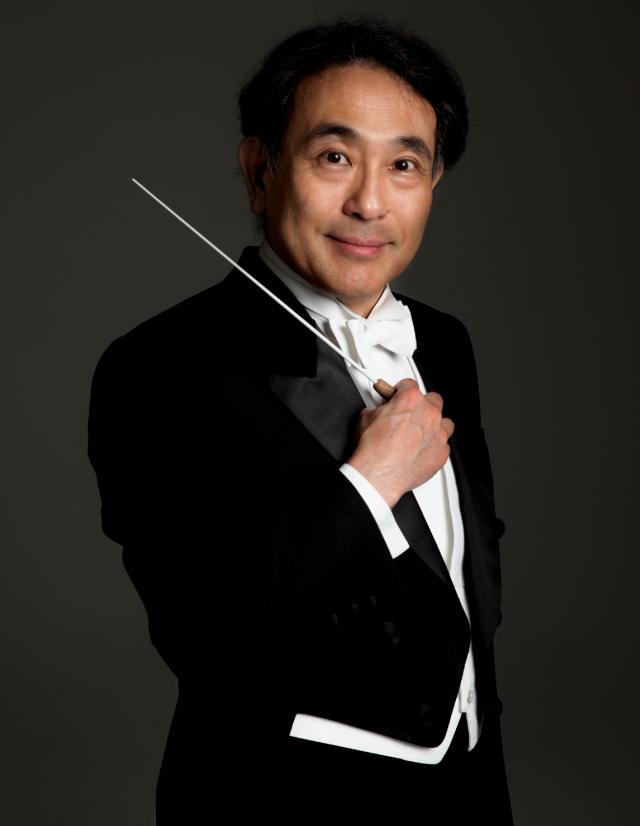
©ai ueda
-
Istanbul State Symphony Orchestra
Istanbul State Symphony Orchestra, IDSO for short, whose root goes back to the Imperial Ottoman Orchestra founded in 1827. The orchestra made the first European tour to Vienna, Berlin, Budapest and so forth in 1917. Through its long history, IDSO maintains a special place in Istanbul’s cultural life, dominated by tradition and new thinking. They performed many of the works of Turkish composers for the first time and recorded radio and TV programs. IDSO organize numerous concert tours, including a six-concert tour in Brazil, Argentina, Peru and Chile (2017). The last time visiting Japan was 20 years ago, in 2003, when they performed for the first time at the Asia Orchestra Week.
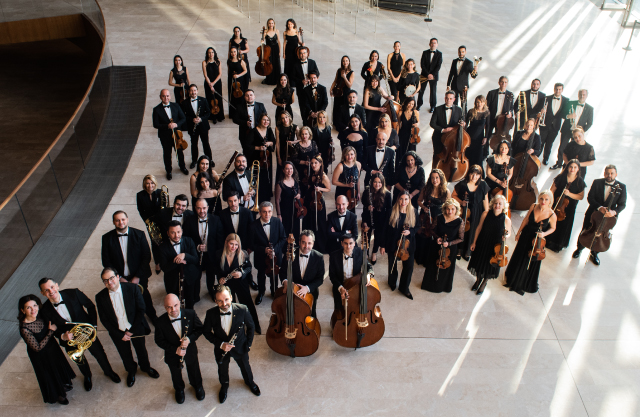
-
Gürer Aykal, Conductor
Gürer Aykal, Honorary Conductor of the Borusan Istanbul Philharmonic Orchestra, has conducted many leading orchestras, including the Amsterdam Concertgebouw Chamber Orchestra as their Principal Conductor, as well as General Music Director and Principal Conductor of the El Paso Symphony Orchestra of Texas. Aykal taught conducting at Indiana University and Texas Tech Universities. He is now a professor of conducting at the Bilkent and Mimar Sinan Fine Arts Universities in Turkey.
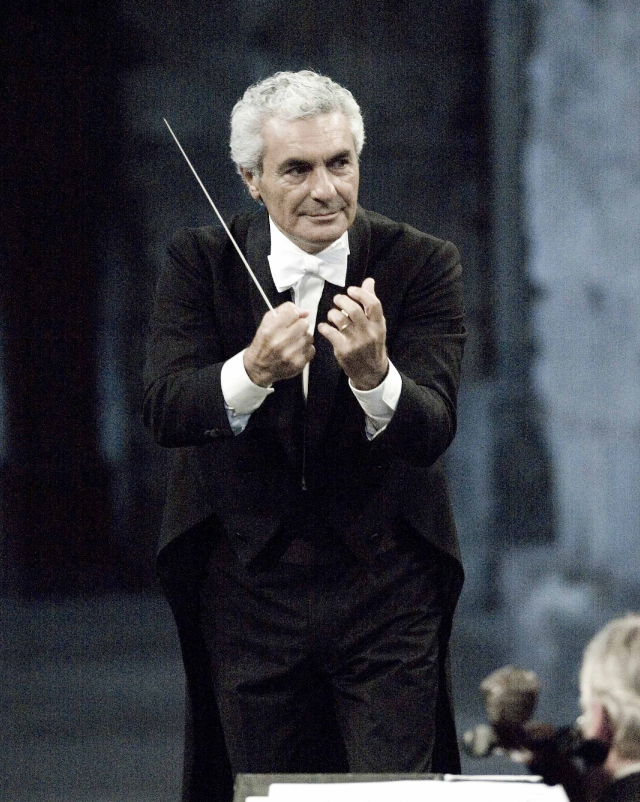
-
Cihat Askin, Violin
Cihat Askin completed his Master’s and Doctoral degrees at the Royal College of Music and City University in London. He performs worldwide as Turkey’s leading violinist; CD recordings of Turkish composers U.C.Erkin and N.K.Akses have earned him acclaim for being a noted champion and broadcaster of modern Turkish music. Apart from being a performer, Askin is an active composer who worked with world-renowned labels. He also established an educational project to support young talents and develop violin education throughout Turkey.
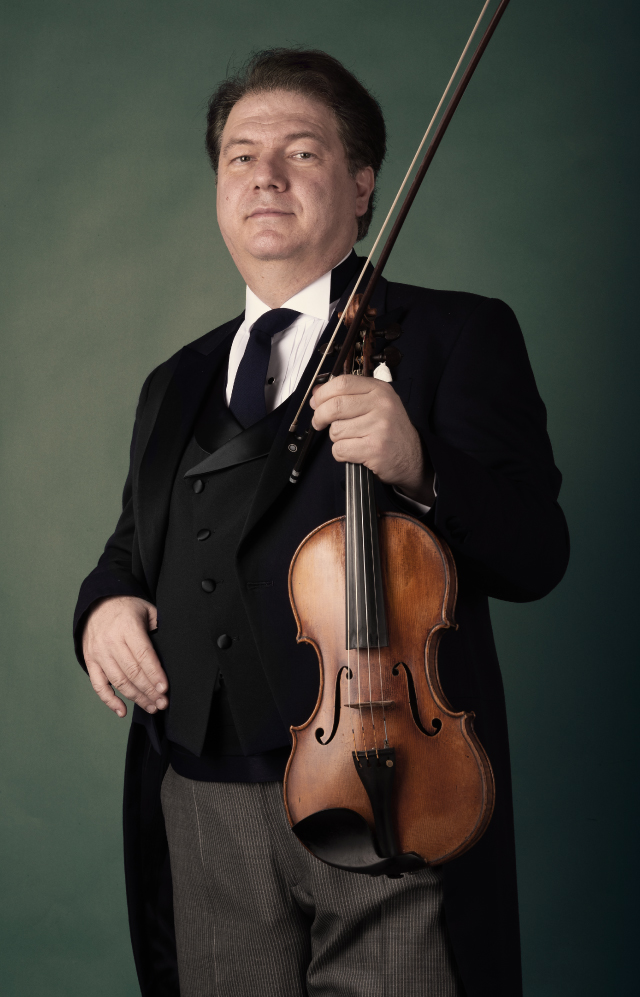
-
Korean Chamber Orchestra
Korean Chamber Orchestra was founded in 1965 and established as the country’s leading chamber orchestra. KCO has been recognized for excellence in their performance, and the United Nations has selected the orchestra as the ‘UN Official Chamber Orchestra of Peace’ through concerts held at the UN in New York and the UNESCO Center in Paris. The orchestra appears in numerous music festivals, including the Rheingau Musik and George Enescu festivals. In 2015, KCO commemorated their 50th anniversary with a successful world tour project, in which they performed at Wiener Musikverein, Konzerthaus Berlin, Carnegie Hall New York and so forth. CDs are many released as well. In February 2023, KCO finally completed their performance of all 46 symphonies composed by Mozart, of which the project had been postponed due to COVID-19, and their performance was highly acclaimed.
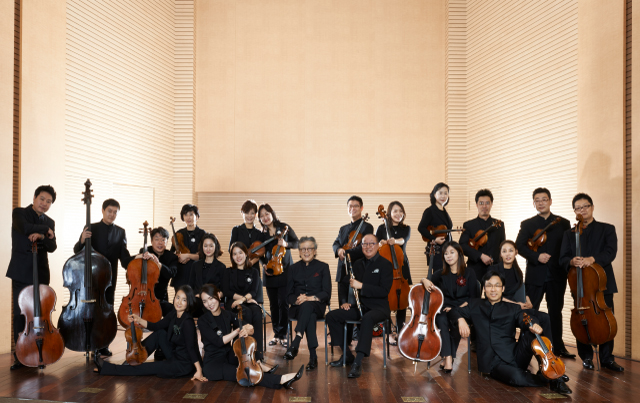
-
Min Kim, Violin, Music Director
Studied in Germany, Min Kim was appointed the concertmaster of the KBS Symphony Orchestra and Music Director of the Korean National Symphony Orchestra. Kim has appeared in over 1,000 concerts worldwide as Music Director of the Korean Chamber Orchestra. He has served as a jury member in numerous international competitions and participated in the Seoul International Music Festival as Artistic Director. He is Vice President of The National Academy of Arts, Republic of Korea, and works on guiding the next generation.
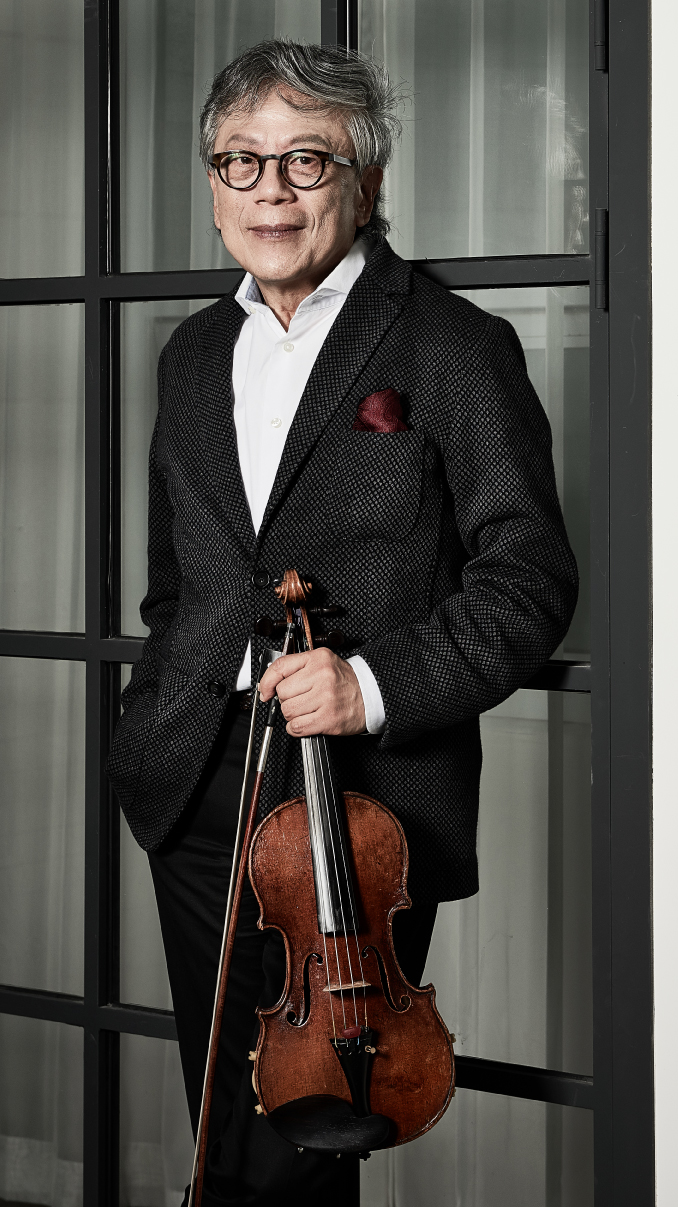
-
Soyoung Yoon, Violin
The winner of major international competitions, including the Yehudi Menuhin and Henryk Wieniawski violin competitions, Soyoung Yoon frequently appears as a soloist with leading orchestras. She also gathers acclaim as a chamber musician. Yoon repeatedly collaborates with the Korean Chamber Orchestra, having recorded Piazzolla’s ‘The Four Seasons of Buenos Aires’ and toured abroad together.
